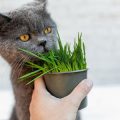Understanding UK Pet Food Regulations
When choosing food for your beloved pet, understanding the regulations that govern pet food in the UK is essential. The UK has a robust framework of laws and standards aimed at ensuring pet foods are safe, nutritious, and clearly labelled. Pet food manufacturers must comply with both UK and EU-derived legislation, including the Animal Feed (Composition, Marketing and Use) (England) Regulations 2015 and equivalent rules across Scotland, Wales, and Northern Ireland. These regulations set out what ingredients can be used, how they must be described, and what information must appear on packaging.
Key Labelling Terms Explained
| Term | Meaning |
|---|---|
| Complete | Provides all the nutrients your pet needs in the correct proportions for a particular life stage or species. If you feed only this product, your pet should receive a balanced diet. |
| Complementary | Intended to be fed alongside other foods. These do not provide all necessary nutrients by themselves—think treats or mixers. |
How Regulations Affect Labelling
UK law requires clear labelling so owners know exactly what they’re feeding their pets. Ingredients must be listed in descending order by weight, and analytical constituents (such as protein, fat, fibre, and ash) must also be declared. Furthermore, any claims like ‘with beef’ or ‘rich in chicken’ have specific legal definitions to prevent misleading information. For example, ‘with beef’ means at least 4% beef content by weight.
Why This Matters
By ensuring transparency and consistency across all pet food products, these regulations help protect both pets and their families from deceptive marketing and poor-quality fillers. Knowing what ‘complete’ versus ‘complementary’ means empowers you to make informed choices that support your pet’s health and happiness.
2. Deciphering Pet Food Labels: What to Look for
Reading a UK pet food label may seem daunting at first, but knowing what to focus on makes all the difference to your pet’s health and wellbeing. Here’s how to approach labels thoughtfully and responsibly, keeping both quality and compassion in mind.
A Guide to Understanding Key Label Elements
British pet food regulations require manufacturers to provide certain information on packaging. Being able to interpret these details empowers you as a caring pet owner:
Ingredient List
The ingredient list is where you’ll find the core of what goes into your pet’s bowl. In the UK, ingredients are listed in descending order by weight before cooking. Look for named animal proteins (such as “chicken,” “lamb,” or “salmon”) at the top of the list. Be wary of vague terms like “meat and animal derivatives”—these often indicate lower-quality or mixed sources.
Order of Ingredients Table
| Ingredient Position | What It Means |
|---|---|
| First Ingredient | Main component; should ideally be a named protein source (e.g., chicken) |
| Second/Third Ingredients | Bulk contributors; look for whole grains, vegetables, or additional meats rather than fillers like wheat gluten |
| Last Ingredients | Usually vitamins, minerals, and additives; check for unnecessary artificial colours or preservatives |
Feeding Guidelines
Responsible British brands provide feeding instructions based on your pet’s weight and life stage. These are recommendations; always monitor your pet’s condition and consult with a vet if unsure. The guidelines reflect typical energy requirements but should be tailored to your pet’s activity level and health needs.
Typical Feeding Guideline Example
| Weight of Pet (kg) | Daily Amount (g) |
|---|---|
| 5 | 100-120 |
| 10 | 180-200 |
| 20 | 320-350 |
| 30+ | 450+ |
Batch Codes and Best Before Dates
Batches are identified by codes printed on the packaging—often near the best before date. This ensures traceability in case of recalls or quality concerns, reflecting the UK’s strong commitment to food safety standards for pets.
Caring for our companions means taking an active role in their nutrition. By learning to read labels closely and questioning what goes into their food, we give them not just a meal, but a gesture of love and responsibility that speaks volumes about our bond.

3. Identifying High-Quality Ingredients
When it comes to choosing the best nutrition for your beloved companion, understanding how to spot high-quality ingredients on UK pet food labels is crucial. Premium pet foods often feature a shortlist of wholesome, recognisable components that support health and vitality. Below, we break down what to look for when scanning ingredient lists in your local pet shop or supermarket.
Named Meats: The Gold Standard
Look for specific meats that are clearly identified, such as “fresh chicken,” “lamb,” or “Scottish salmon.” These indicate a higher content of real animal protein rather than vague terms like “meat meal” or “animal derivatives.” Quality brands in the UK pride themselves on transparency and will list the exact source of animal protein at the top of the ingredient list.
Wholesome Grains and Alternatives
Not all grains are created equal. In premium UK pet foods, you’ll find nutritious grains like brown rice, oats, or barley. Some recipes use alternative carbohydrate sources such as sweet potato or peas—great options for pets with sensitivities. These ingredients provide essential fibre and slow-release energy while steering clear of cheap fillers like maize or wheat gluten.
Recognisable Vegetables & Superfoods
The inclusion of real vegetables—like carrots, spinach, or pumpkin—signals thoughtful formulation. Many top-tier British brands now add superfoods such as blueberries or seaweed for natural antioxidants and trace minerals. These additions reflect a growing trend towards holistic pet wellness across the UK.
| Ingredient Type | Examples to Look For | Avoid |
|---|---|---|
| Named Meat Sources | Fresh chicken, Scottish salmon, lamb | Meat meal, animal derivatives |
| Grains & Carbohydrates | Brown rice, oats, sweet potato, barley | Corn/maize gluten, wheat gluten |
| Vegetables & Extras | Pumpkin, spinach, carrots, blueberries | Artificial colours/flavours |
Selecting products with these wholesome ingredients ensures your pet receives balanced nutrition that aligns with their natural needs. By taking the time to read labels carefully and understand what goes into each recipe, you play an active role in supporting your furry friend’s lifelong wellbeing—a small act of kindness that truly makes a difference.
4. Recognising and Avoiding Fillers and Low-Quality Additives
When caring for our beloved pets, it’s vital to understand the difference between nourishing ingredients and those that simply bulk up pet food without providing real value. Many UK pet foods contain fillers and low-quality additives—often hidden behind vague language on packaging. By knowing what to look out for, we can make more informed choices that genuinely benefit our companions.
Tips for Spotting Common Fillers
Fillers are ingredients added mainly to increase volume or calorie content, rather than offering nutritional benefits. In the UK, some of the most common fillers include cereals, cereal by-products, and derivatives of vegetable origin. These may sound harmless but often indicate lower meat content and less digestible nutrition for your pet.
| Filler/Additive | What It Means | Why Avoid? |
|---|---|---|
| Cereals (e.g., wheat, maize) | Generic term for grains; may include low-cost bulking agents | Can cause allergies or intolerances in sensitive pets |
| Meat and animal derivatives | Unspecified animal parts; lacks transparency | May be of variable quality; hard to trace source |
| Derivatives of vegetable origin | Non-specific plant-based fillers | Poor nutritional value; mainly used as bulk |
Artificial Additives: Colours, Flavours & Preservatives
Some pet foods use artificial colours or flavours to make products more appealing—more so to humans than animals. Look out for ingredient lists containing E-numbers or terms like ‘colourants’, ‘artificial flavourings’, and ‘preservatives’ such as BHA, BHT, or ethoxyquin. These are not only unnecessary but may also have long-term health implications.
How to Identify Ambiguous Ingredient Names
Transparency is key when choosing quality pet food. Ingredients listed as ‘meat meal’, ‘animal fat’, or just ‘derivatives’ often mask the true nature and origin of what’s inside. High-quality brands typically specify sources—look for clear terms like ‘British chicken breast’ or ‘lamb liver’. When in doubt, choose products with straightforward, recognisable ingredients.
A Quick Checklist for Savvy Shoppers:
- Avoid generic terms like ‘cereals’ or ‘meat derivatives’.
- Be wary of long ingredient lists filled with unrecognisable names.
- Prefer foods listing specific meats or fish as primary ingredients.
- Steer clear of artificial additives and colourants.
Your attention to detail not only supports your pet’s health but also encourages a higher standard across the UK pet food industry—because every companion deserves honest nourishment and a life filled with wellbeing.
5. Red Flags: Ingredient Terms to Be Cautious About
When browsing pet food labels in the UK, it’s important to look beyond colourful packaging and marketing buzzwords. Certain ingredient terms can be deliberately vague or misleading, making it difficult for caring owners to truly know what’s in their companion’s bowl. Let’s break down some of these problematic terms and why they warrant a closer look.
Ambiguous Ingredients: What Are They Really?
Some commonly used phrases on UK pet food labels may sound harmless but actually obscure the real nutritional value of the product. Here are two major culprits:
| Term | What It Means | Why It’s Concerning |
|---|---|---|
| Meat and Animal Derivatives | A catch-all term covering any animal parts, which could include meat, offal, skin, feathers or even hooves from unspecified animals. | Lack of transparency—no way to know the source, quality, or proportion of actual meat vs by-products. |
| Cereals | Any type of grain (wheat, maize, rice, barley etc.), often unspecified. | Makes it hard to identify potential allergens or the exact carbohydrate content; sometimes used as cheap fillers. |
The Impact on Your Pet’s Health
Using such broad ingredient descriptions allows manufacturers to change recipes without updating the label, prioritising cost over quality. Pets with allergies or sensitivities can react poorly to hidden ingredients. Moreover, foods high in fillers like unidentified cereals may lack sufficient protein and nutrients vital for health and vitality.
Avoiding the Red Flags
As a loving pet guardian, you deserve transparency. Look for brands that specify their protein sources (e.g., “fresh chicken” rather than “meat derivatives”) and clearly list all grains or carbohydrates used. Remember: if a label seems purposefully vague, it might be hiding something your pet deserves better than.
By reading between the lines and knowing which terms raise red flags, you can make more informed choices that reflect genuine care for your companion’s wellbeing.
6. Choosing Ethical and Sustainable Pet Food Options
For caring pet owners in the UK, choosing the right food goes beyond ingredient lists and nutritional value—it’s about supporting ethical brands that prioritise animal welfare, sustainability, and local communities. As awareness grows about our environmental impact, many British families now seek pet food brands whose values align with their own. Here’s how you can make mindful choices for both your pet and the planet.
Animal Welfare Standards
Look for brands that are transparent about sourcing and treatment of animals. In the UK, reputable labels such as RSPCA Assured, Soil Association Organic, or Red Tractor Certified indicate higher welfare standards for livestock used in pet food production. Brands committed to animal welfare often clearly display these certifications on their packaging.
Environmentally Friendly Practices
Sustainable pet food companies focus on reducing their carbon footprint by using renewable energy, minimising packaging waste, and choosing responsibly sourced ingredients. Some even use insect protein or upcycled ingredients to create eco-friendly recipes. When reading UK pet food labels, look for information about:
- Recyclable or compostable packaging
- Use of renewable energy in manufacturing
- Commitment to net zero or reduced emissions goals
Supporting Local Sourcing
Selecting brands that source ingredients from British farms helps reduce transport emissions and supports local economies. Many UK-based pet food producers highlight their use of locally grown meats, grains, and vegetables—often resulting in fresher products with a lower environmental impact.
Quick Comparison: Ethical & Sustainable UK Pet Food Brands
| Brand Name | Animal Welfare Certifications | Sustainability Practices | Local Sourcing? |
|---|---|---|---|
| Lily’s Kitchen | RSPCA Assured, Organic Options | Recyclable Packaging, B Corp Certified | Yes |
| Benevo | Vegan Society Approved | No animal products; Plant-based proteins | Mainly UK/EU sources |
| Naturally Healthy Pet (NHP) | Red Tractor Certified Suppliers | Makes use of solar power; minimal packaging | Yes |
The Impact of Your Choice
Your decisions as a consumer can drive positive change across the industry. By favouring UK brands that champion animal welfare, sustainable practices, and local sourcing, you not only provide wholesome nutrition for your beloved companion but also contribute to a kinder and greener world. Next time you read a pet food label, let your choices reflect both compassion and responsibility—for your pets and for our shared future.


